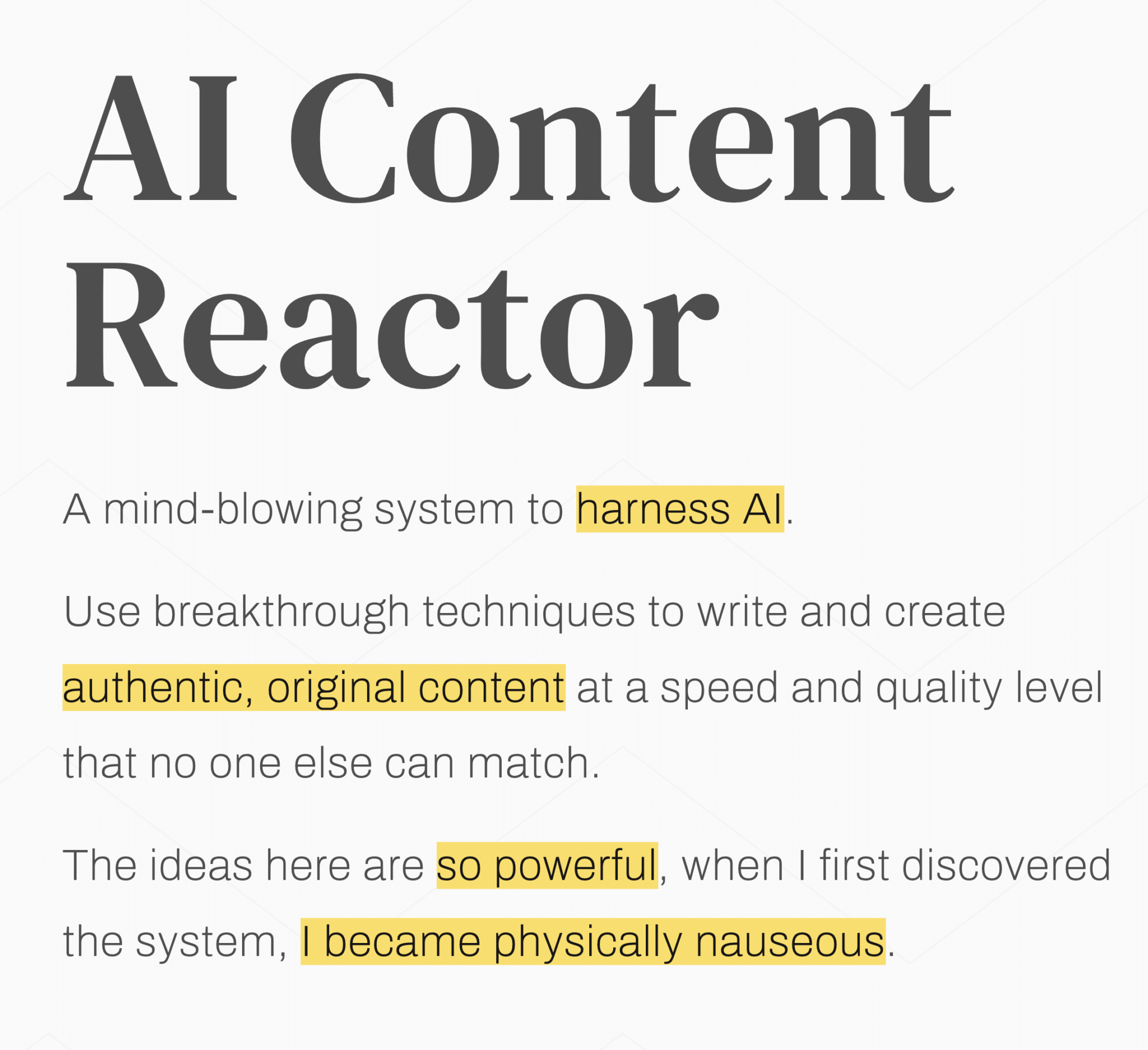Starting a blog for the first time inspires a swarm of thoughts and questions. When you’re first looking to create a business out of blogging, there’s a question every blogger faces: How do I get the readers to do what I want them to do by the end of the article? I know for me it was a burning question.
I remember writing those first posts so long ago; I’d stare at the blank screen. Sure, I had marketing experience. I had skillz, right? Right. I mean, I’d been in marketing for at least ten years before I started blogging. Yet somehow the blog was so… personal. Marketing copy? No problem; but, blogging? That was a whole other story. I struggled to find the right combination of words to coerce faceless people to do things.
There was a catch, of course. I didn’t want to feel “salesy.” It was like going back to day one in Marketing 101. The concept seemed as impossible as it first had in college. How could I make money from blogging if I didn’t sell? How do I sell without making the reader feel sold? Let me cut through the confusion so you don’t make the same mistakes I did.
Call to Action
This is what you want your reader to do after reading your article. It can be signing up to a mailing list, buying a product, clicking to another article, sharing the post on social media, or any other do this action. A powerful call-to-action uses emotions to compel the reader to do something. Without this element, your blog won’t be profitable. It is an important part of blogging, and it doesn’t have to be scary or mysterious.
The C-T-A Formula
A successful article drives visitors to an action. To do this, there is a simple formula:
Introductory Story
- Outline Problem (with supporting info and data)
- Conclusion/Solution (with a call-to-action)
If you’re using an outline to create your posts, this will be a tiny change. If not, either consider using an outline or keep the three steps in mind when you’re writing. Either way, it all begins with a story.
The Power of Emotion
Telling a story helps engage the reader emotionally, with many benefits. Not only will it keep them reading, it also builds desire for change. Using this desire, you can inspire an action that will help them make that change for themselves. Depending on what action you want them to take, you might use one of three main storytelling strategies:
- A story about your product or service
- Customer experiences with your brand
- Anecdotes about reader’s experiences
Knowing how to write powerful call to actions is only half of the battle. The other half is how to make them good.
Manipulation vs. Empathy
Nobody wants to sound like an oily used car salesman (even the oily used car salesman). Your visitors will see right through gimmicks and manipulation. That route destroys trust in your blog and brand, and that’s the opposite of what you want. Instead, focus less on adverbs and more on knowledge. Build trust along with the emotional power by using genuine empathy instead of desperation. Know that what you call upon them to do is going to be helpful for them, and explain why.
Be the Customer
Sometimes you have to step back and read your article from the customer’s perspective. Ask yourself if you feel compelled to the action you are calling your visitors to do. Do you feel tricked or manipulated into the action? The successful post should leave you feeling informed. Remember not to withhold information. Nobody likes the “I know something you don’t” tactic.
After the Call
A lot of focus goes into generating a powerful action, and rightly so. However, many stop there and suffer losing repeat customers as a result. When the customer has submitted to your call to action, they often want reassurance they made the right decision. Anticipating this, you can reward their action by over-delivering. Ask yourself what you would want in their position, and then give it. Doing this will build trust in your brand, and encourage visitors to return with confidence.
Final Thoughts
You might be blogging for a profit, but that doesn’t mean you have to trick people into doing what you want. After all, no one enjoys finding out they’ve been scammed. Not only will that ruin your chances of additional sales from that particular customer, but it will also eventually ruin your brand.
As a general rule, give as much information as possible every step of your customer’s experience. The more value your visitors get out of the experience, the more you will be rewarded in actions, profit and satisfied customers.
If you’re having problems with your calls-to-action achieving the results you need, reach out to Level343 and we’ll give you a hand up. We take you to the next level of business success.







































